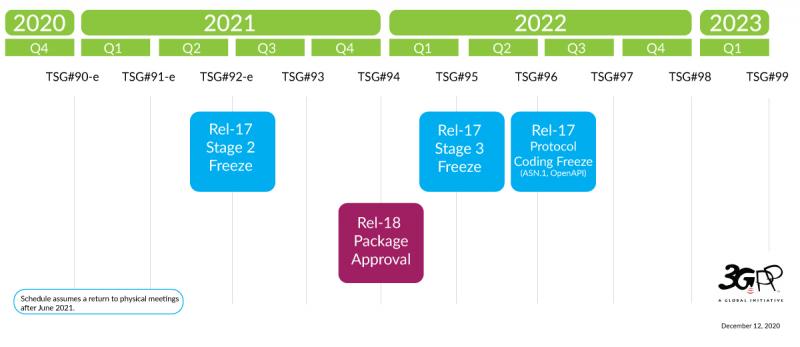Earlier this month, 3GPP Technical Specification Groups (TSG) announced a firm Release 17 timeline after considering the effects that e-meetings in 2020 had on the work’s progress and the pressure that cancellation of all face-to-face meetings has created.
Earlier this month, 3GPP Technical Specification Groups (TSG) announced a firm Release 17 timeline after considering the effects that e-meetings in 2020 had on the work’s progress and the pressure that cancellation of all face-to-face meetings has created.
The new commitment will greatly help companies advance their plans for network roll-out and new product development. The Release 17 schedule will now allow 3GPP the time it needs to complete the maintenance of Release 16 specifications as they become very stable. At the same time, it allows the groups to switch priority to some exciting Release 17 features.
With remote working now confirmed as the norm until June 2021, the delegates took guidance from the Chairs of the Working Groups and the three TSG Chairs, that delegates participating in both the actual e-meetings and discussions in-between meetings need more time to be able to comfortably and accurately consolidate the results of their work. This guidance takes into account the fact that in the busiest groups the stream of contributions can peak at over 1000 emails a day.
At last week’s Plenary, the TSG RAN, TSG SA and TSG CT Chairs have co-proposed a new schedule for the completion of Release 17 work, based on the assumption that 3GPP will return to physical meetings for the second half of 2021.
New Release 17 Schedule:
- Rel-17 Stage 2 Functional Freeze, June 2021 (TSGs#92-e)
- Rel-17 Stage 3 Protocol Freeze, March 2022 (TSGs#95)
- Rel-17 Protocol coding Freeze (ASN.1, OpenAPI), June 2022 (TSGs#96)

Only the timeline for the work has changed; the content of Release 17 remains as approved during the December 2019 TSG#86 meetings. With this revised timeline, the broader 5G industry can rely on an informed and well-considered schedule that takes into account the peculiar situation created by life during a pandemic.
Studies in several key areas are already in the pipeline. These include: coverage and positioning enhancements, NR and slicing QoE work, adding new frequency ranges, NR reduced capacity devices, enhanced support of non-public networks, supporting unmanned aerial systems, support for edge computing in 5GC, proximity-based services in 5GS, network automation for 5G (Phase 2) and for access traffic steering, switch and splitting (ATSSS), among others.
Release 17 features to look out for include new work and enhancements for: URLLC for industrial IoT over NR, NR support over non-terrestrial networks, MIMO, integrated access and backhaul (IAB), MBS positioning, NR multicast and broadcast services, RAN slicing for NR, NR sidelink, multi-RAT dual-connectivity, support for multi-SIM devices for LTE/NR, NR small data transmissions in inactive state and multimedia priority service, to name a few.